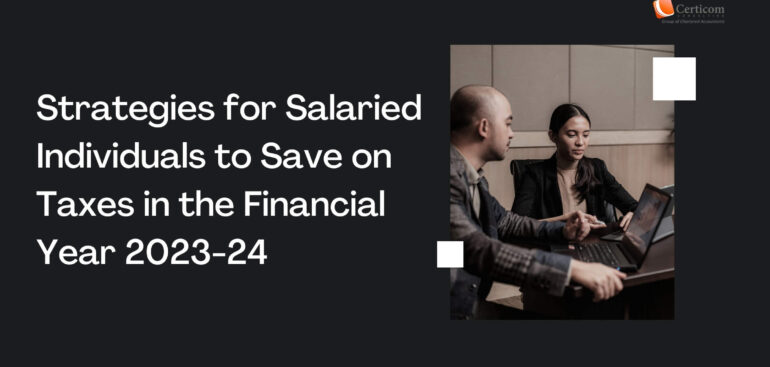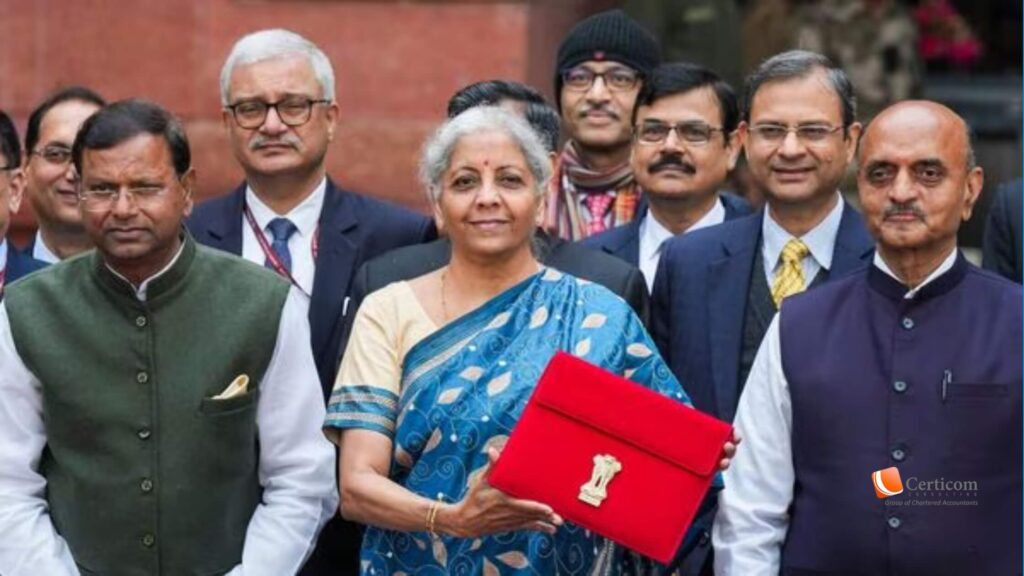Strategies for Salaried Individuals to Save on Taxes in the Financial Year 2023-24
The Income-tax Act of 1961 offers a number of deductions and exclusions that people can use to reduce their tax liability on income received in Fiscal Years 2023–2024.

The Income-tax Act of 1961 offers a number of deductions and exclusions that people can use to reduce their tax liability on income received in Fiscal Years 2023–2024. However, the amount of tax that a person can save will vary depending on two things: The tax system they select and the costs or investments they incur in order to qualify for the aforementioned deductions. It is significant to note that the interim budget for 2024 does not alter the income tax slabs for the fiscal year 2024–2025 (April 1, 2024–March 31, 2025).
As of this fiscal year, the default tax regime is the new one. A salaried person must specifically choose the previous tax system. If a person chooses to continue paying taxes under the previous system, they will still be able to take advantage of tax exemptions like home rent allowance (HRA), leave travel concession (LTC), and deductions under sections 80C (up to Rs 1.5 lakh in a fiscal year), 80D (deduction for paid medical policy premiums), 80E (interest paid on student loans), etc. Remember that under the new tax law, there are only two deductions permitted.
Deductions and exemptions for eligible investments or expenses
Section 80C
Individuals may claim up to Rs 1.5 lakh in deductions under section 80C per financial year. Only taxpayers who choose to use the previous tax system are eligible to claim the 80C tax advantage.
The Public Provident Fund, Employees’ Provident Fund (EPF), Equity-Linked Savings Scheme (ELSS), Tax-saving Fixed Deposits (FD), National Savings Certificate (NSC), and many more investment options are eligible under Section 80C. Under section 80C, some expenses may also be deducted as long as they are truly incurred. Among them are things like life insurance premiums, kids’ education expenses, principal repayment on home loans, etc.
Section 80 CCD(1B)
Individuals may deduct up to Rs 50,000 for investments made in the National Pension System (NPS), which is an additional deduction above the Section 80C deduction.
The deduction allowed under section 80CCD(1B) of up to Rs 50,000 exceeds the Rs 1.5 lakh section 80C threshold limit. Therefore, under the previous tax system, a person may deduct up to Rs 2 lakh in taxes by adding both of these deductions.
Section 80 CCD (2)
A person may only claim a deduction under section 80 CCD (2) if their employer, whether public or private, makes contributions to their NPS account. An employee in the private sector may deduct no more than 10% of their compensation, which is calculated as base pay plus dearness allowance (DA). Under section 80 CCD, government employees may withhold up to 14% of their pay (2).
An additional requirement is that an employer’s contribution to an NPS, EPF, or superannuation fund may only be deducted up to Rs 7.5 lakh within a fiscal year. The excess payment, along with any interest or dividends made on it, will be taxable in the employee’s hands as perquisites if the employer’s total contribution exceeds Rs 7.5 Lakh in a given fiscal year.
There is a deduction for 80CCD (2) under both the old and new tax systems.

Section 80D
Only those who have purchased health insurance policies for themselves, their spouses, their dependent children, or their parents are eligible for a deduction under section 80D. Moreover, it is only accessible under the previous tax structure.
Under section 80D, individuals under 60 years of age can deduct up to Rs 25,000 for health insurance premiums paid for themselves, their spouses, and their dependant children. Additionally, a further sum of Rs 25,000 can be claimed as a section 80D tax deduction if the individual is paying the health insurance premium for parents who are under 60 years old.
An individual may claim up to Rs 50,000 in additional tax deduction under section 80D if they are paying the health insurance premium for senior citizen parents (those 60 years of age or over), as opposed to the Rs 25,000 additional deduction. Additionally, a person may deduct Rs 5,000 from their taxes for whatever costs they make for preventative medical examinations. However, this sum (Rs 5,000) is only allowed up to the entire Rs 25,000/Rs 50,000 section 80D limit.
Deduction for professional tax
In some states, professional tax is mandatory for all individuals, regardless of their income type. “If professional tax is paid by the employer on behalf of its employee, then it is first included in the salary of the employee in their Form 16 as a perquisite and then the same amount is allowed as deduction without any limit.” “For salaried individuals, professional tax is deducted by their employer and deposited with the appropriate state government.”
Only under the previous tax regime is it possible to deduct professional tax payments: Section 16(iii) permits salaried individuals to do so, if they so want, in order to calculate their taxable compensation. However, those who choose to pay professional tax under Section 115BAC’s new, reduced tax regime are not eligible to claim the aforementioned deduction.
Leave Travel Allowance (LTA)
LTA is a reimbursement that the worker is eligible to receive for himself and his dependents, including his spouse, kids, parents, siblings, and sisters, who travel to any location in India while on leave. The guidelines for determining the amount that can be claimed as an LTA deduction are outlined in the Income-tax Act.
The employee’s domestic travel expenses (airfare, train or bus fare) are the only ones covered by the LTA exemption. LTA does not cover other costs such internal travel, lodging, meals, sightseeing, or transportation within the destination.
Only individuals who choose to use the previous tax system are eligible for the LTA tax exemption.
House Rent Allowance (HRA)
An individual may be eligible for tax exemption on HRA if they are under the old tax regime, are paying rent for their housing, and get an HRA component of their wage. Having said that, after a certain computation and up to Rs 60,000 in annual rent, a person who pays rent but does not receive HRA as part of their wage may also be eligible to claim tax exemption on HRA.
Deduction for Encashment of Leaves
10 (10AA) states that “government employees have no monetary limit for claiming deduction of leave encashment.” Leave encashment is defined as the encashment of unused earned leave at the time of retirement. However, there is a formula that non-government sector workers must adhere to in order to determine the precise amount of leave encashment that can be deducted.
This tax deduction on leave encashment is only available for those under the old tax regime.
Deduction for home loan interest
Under section 24(b), a person may deduct interest paid on a home loan if they are living in the residence for which they have obtained a home loan. In a given financial year, the maximum amount that can be deducted for home loan interest is Rs 2 lakh. The interest component of the home loan is deductible under section 24(b), and a deduction of up to Rs 1.5 lakh for the principal component is possible under section 80C.
In restricted circumstances, individuals who choose to use both the old and new tax regimes may be eligible for this deduction.
Section 80E
An individual may deduct the interest portion of an educational loan under section 80E. The maximum amount of a deduction under section 80E is unlimited, and there is no requirement for an individual to provide any supporting documentation in order to make such a claim. There is an eight-year maximum for this deduction.
The 80E tax deduction is only available to those who choose to use the previous tax system.
The financing for his higher education or the higher education of his relative should have been obtained from any financial institution or from any philanthropic organization that has been recognized.
Section 80 EEB
An individual is eligible to deduct interest on an electric car loan up to Rs 1.5 lakh each financial year. But the loan needs to be approved sometime between April 1, 2019, and March 31, 2023.
Standard deduction
Both the previous and new income tax regimes allow salaried individuals to deduct a standard amount of Rs 50,000.
Related Post
What Is Inheritance Tax
Deadline for PAN-Aadhaar Linking – May 31, 2024
Understanding Form 10F: Purpose, Scope, and Mandatory Conditions
Book A One To One Consultation Now For FREE
How can we help? *










